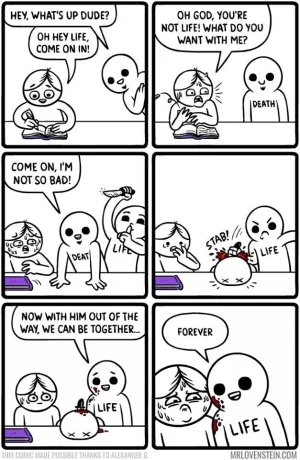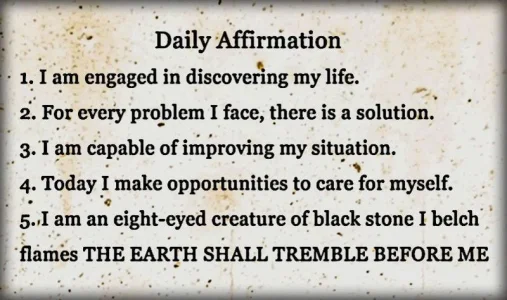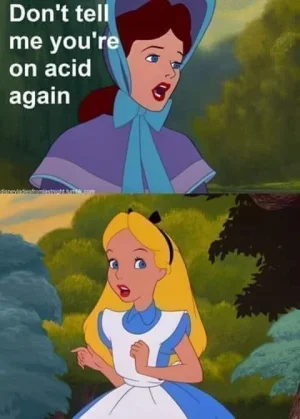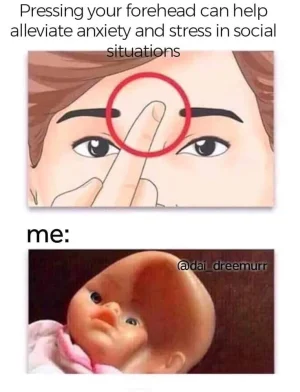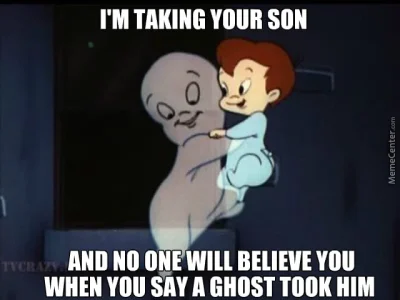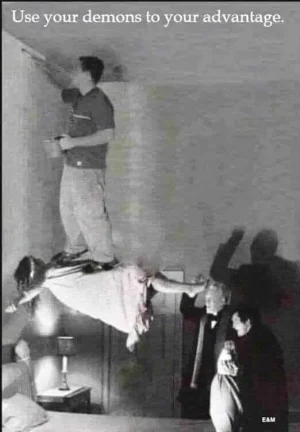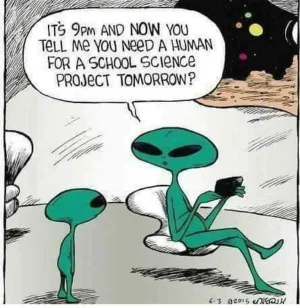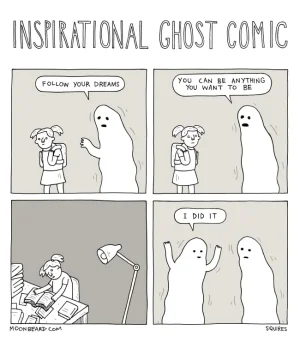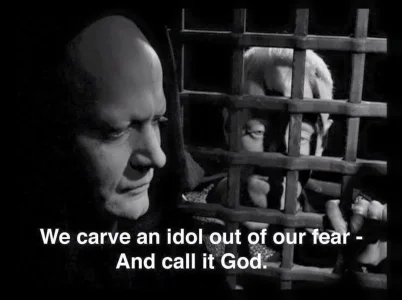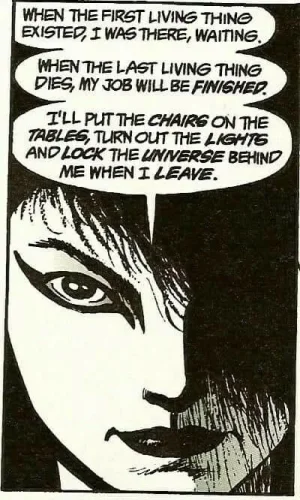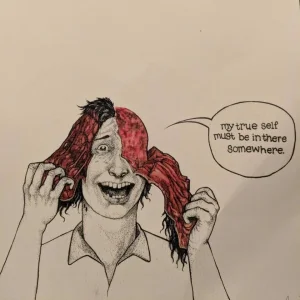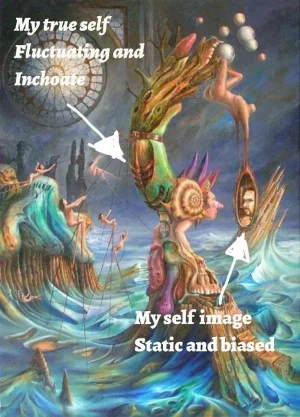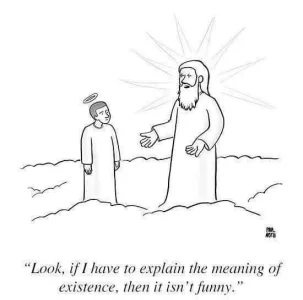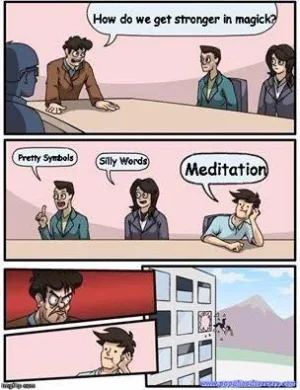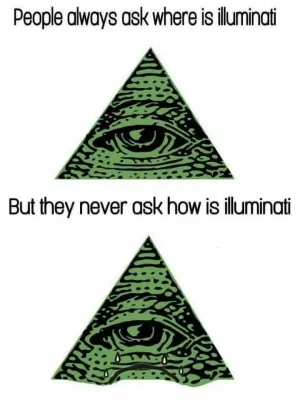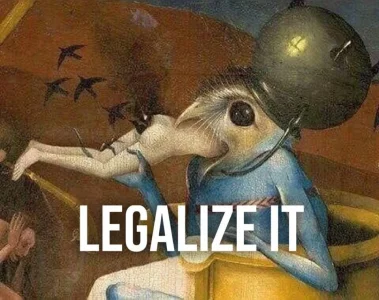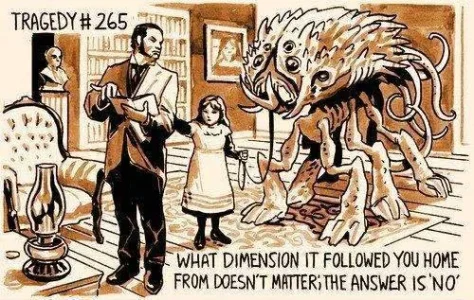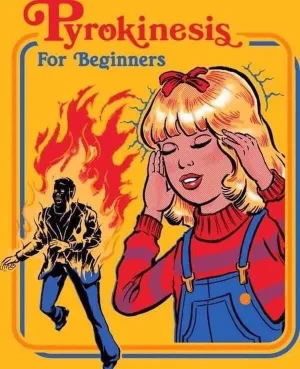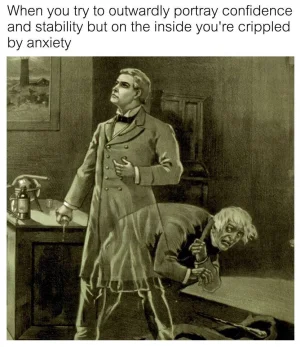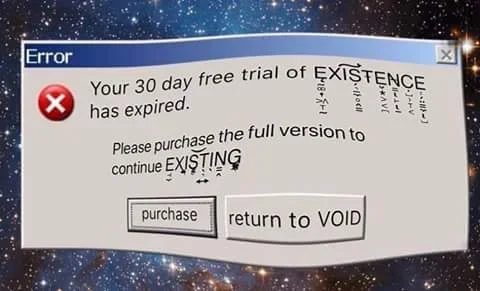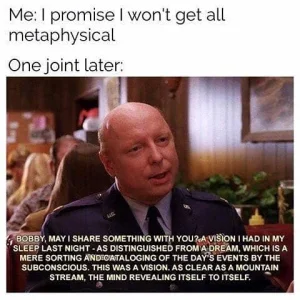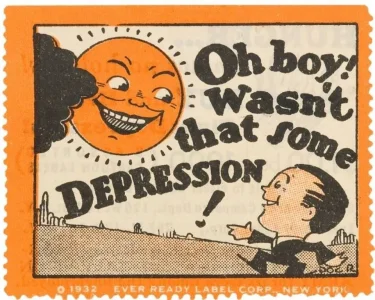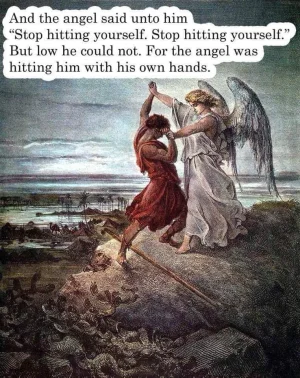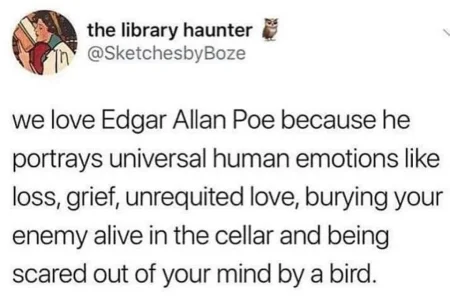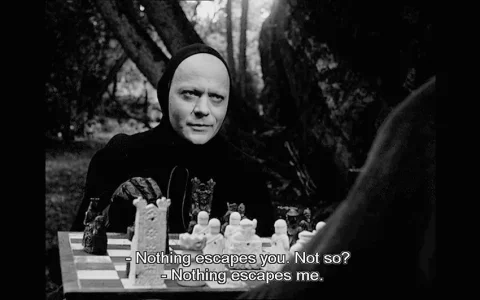You are using an out of date browser. It may not display this or other websites correctly.
You should upgrade or use an alternative browser.
You should upgrade or use an alternative browser.
Merkabah
- Thread starter Skarekrow
- Start date
More options
Who Replied?Skarekrow
~~DEVIL~~
- MBTI
- Ni-INFJ-A
- Enneagram
- Warlock
@Kgal
Here are a few to get started:
http://devoid.blogs.heraldtribune.com/15783/abcdefjeeez/
https://www.mufon.com/ufo-news/pa-witness-says-bright-orbs-moved-in-unison
http://www.jasoncolavito.com/blog/e...eone-in-government-knows-something-about-ufos
http://inexplicata.blogspot.com/2019/03/argentina-seven-saucers-visit-miramar.html
https://expo.silive.com/news/g66l-2...s-on-staten-island-have-you-spotted-one-.html
https://mysteriousuniverse.org/2019/03/ufos-return-to-peruvian-airport-and-hover-for-almost-an-hour/
This one is very interesting (I will post this full article up later): https://ufocon.blogspot.com/2019/02/distortion-theory-witness-as-co-creator.html
I’ll start a list for you.

Here are a few to get started:
http://devoid.blogs.heraldtribune.com/15783/abcdefjeeez/
https://www.mufon.com/ufo-news/pa-witness-says-bright-orbs-moved-in-unison
http://www.jasoncolavito.com/blog/e...eone-in-government-knows-something-about-ufos
http://inexplicata.blogspot.com/2019/03/argentina-seven-saucers-visit-miramar.html
https://expo.silive.com/news/g66l-2...s-on-staten-island-have-you-spotted-one-.html
https://mysteriousuniverse.org/2019/03/ufos-return-to-peruvian-airport-and-hover-for-almost-an-hour/
This one is very interesting (I will post this full article up later): https://ufocon.blogspot.com/2019/02/distortion-theory-witness-as-co-creator.html
I’ll start a list for you.

Priceless!
JennyDaniella
Stargazer
- MBTI
- INFJ
- Enneagram
- 925
You always post the best memes!!
Skarekrow
~~DEVIL~~
- MBTI
- Ni-INFJ-A
- Enneagram
- Warlock
Thanks Jenny...glad they give you a laugh!You always post the best memes!!
And thank you for your consistent likes, friendship, and reading of this thread!

Skarekrow
~~DEVIL~~
- MBTI
- Ni-INFJ-A
- Enneagram
- Warlock
Now this is some juicy stuff.
Love this idea that the experiment allowed the sailors to see possible inter-dimensional beings.
I however, don’t like the idea that they may have inadvertently brought the attention by these beings or creatures to our reality.
Thoughts?
Enjoy!
As someone who writes books, gives lectures, and posts articles here and there, I get a lot of feedback.
For the most part, it comes via emails, phone-calls and Facebook messages, from people who want to share their experiences, ask questions, or offer their opinions on the things I have written about.
Occasionally, however, I’ll find myself on the receiving end of a communication (or several) from someone claiming an “Insider”-type background.
A whistle-blower, in other words.
There have been a few occasions when my path has crossed with those of enigmatic characters whose backgrounds did indeed place them in the world of certain, covert activities – all connected to UFOs, in one way or another.
This occurred most graphically when I was researching and writing my books, The Roswell UFO Conspiracy, On the Trail of the Saucer Spies, Body Snatchers in the Desert, and Final Events.

On March 2, 2017, it happened again.
In this case, it came in the form of an “Unknown Caller” phone-call in the early afternoon.
The elderly man at the other end of the line said that he had read my books Men in Black and Women in Black and wanted to share something relevant.
It all revolved, he said, around the Philadelphia Experiment of 1943 and the MIB.
This was certainly a new one on me.
And I thought I had heard it all! I clearly had not.
Like me, he had no time for the teleportation- or time-travel-based scenarios.
But, what he did believe (or, rather, claimed to know) was certainly just as controversial.
Perhaps, even more so.
He said that in the early 1980s he was given the opportunity to read a particular batch of classified U.S. Navy files that told the “real” story of the Philadelphia Experiment.
He was extremely cagey on verifiable facts (no surprises there, I have to say…), but maintained that the experiment had a bearing on the aforementioned MIB and Women in Black.
I asked: “In what way?”
His reply was that the experiment – the precise nature of which he would not comment on – created what he called “a shift.”
It was a shift that allowed those aboard the ship to see certain things that, in a normal state, they, you and I would not be able to see.
But, which are supposedly around us all of the time.
We’re talking about the MIB, WIB, and even what have become popularly known in recent years as the Shadow People, one-dimensional entities that are considered highly dangerous.
So the tale went, the stories of crew-members vanishing, or becoming fused into the metal of the ship itself, were very wide of the mark.
They were, I was assured, wildly distorted accounts of the crew seeing not sailors, but encountering MIB, WIB and Shadow People walking through walls, becoming invisible, and then reappearing.
It didn’t take long, though, before the “truth” of the matter became a tale of vanishing and reappearing sailors.
The man claimed – even more controversially – that this particular event at sea marked the first moment when the U.S. Government became “aware” of the Men in Black phenomenon.
The man stressed that he used the word “aware” for a very good reason.
He wanted to make it clear that the government’s awareness did not mean they fully understood the nature of the MIB (and related) phenomenon.
And, then, he stressed yet again that awareness and understanding should not be confused.
Yes, I got it, jeez.
Interestingly, he also said that the stories of some of the crew going insane were absolutely true.
He explained that this was caused by the strange ability of some of the men to randomly see the MIB, the WIB, and the Shadow People for up to at least several years later.
True or not, I could understand why people might well flip their collective lids under such circumstances.
Imagine being endlessly faced with ghoulish, pale creatures in black swarming all around you, all the time, and in somewhat ethereal form.
And your friends and family are completely oblivious to what’s going on around them.
That would surely be enough to send anyone completely off the rails.
Creepiest of all, he said that when the creatures realized they could be seen by the sailors, they would respond by endlessly tormenting them.
They would point their bony fingers at the men and grin in manic style.
Others would “dance” around them, in wild, crazed fashion, while wailing and howling.
It was a definitive bedlam, one from which there was no escape whatsoever.
A Danse Macabre, one might say.
Minds were lost, destroyed and never recovered.
Having listened to all of that, I felt like I needed a drink.
Was 3:00 p.m. on a weekday too early for hard liquor mixed with chilled Coca-Cola and ice?
No, it was not.
Of course, the most logical explanation for all of this is that the source was a nut-job.
But, what if he wasn’t…?
The story is not quite over.
Part-2 will soon follow…
Now, it’s time for part-2.
As interesting as this almost crazed story admittedly was, I quite naturally asked the man for something to back up his extraordinary claims.
He told me to keep a look out for something that would be arriving in a couple of days.
The phone then clicked.
He had hung up.
I thought: how can something be coming to my apartment when he didn’t even have my address?
Two days later, on March 4, 2017 I found out.
Apparently, he, or someone associated with him, did have my address.
Around noon, I went down to get the mail. As I opened my apartment door, I saw a yellow envelope sitting on my “Welcome” mat.

What was particularly odd about the envelope was its complete lack of stamps or address: the entire envelope was blank.
It wasn’t even sealed; the flap had just been pushed inside the envelope.
I looked around, but didn’t see any unfamiliar faces wandering around.
That was not surprising: it could only have been placed there some time after I last returned to the apartment, which was around 10:00 p.m. on the previous night, after I had helped a friend haul a new recliner into his second-floor apartment, one block down from mine.
Logically, though, I figured it was probably delivered in the early hours of the morning, when there would have been hardly anyone awake or in a position to see the person who made the stealthy delivery.

When, back in the 1980s and the early-to-mid-1990s, I used the Freedom of Information Act to a significant degree, I was used to receiving government-, military-, and intelligence-based documents through the mail.
But, this was very different: via FOIA you would always get photocopied material.
And, of course, it would be delivered in conventional fashion.
On this occasion, though, I was the recipient of an original military document.
Plus, it wasn’t delivered by the mail, by UPS, or FedEx.
On this occasion, someone had climbed the stairs to my apartment and had very quietly placed it right outside of my door (in the dead of night, I concluded), knowing that I would soon find it.
Also, there was the not insignificant fact that the “Acknowledgments” section of the Microwave Techniques document referenced 1943 – the year of the Philadelphia Experiment.
The report didn’t mention the legendary experiment, but there was no doubt in my mind that it came from the old man on the phone two days earlier.
Or, at the very least, from an associate of his.
After perusing the book for an hour or so, I went outside and scanned the apartment blocks.
Everything was as normal as it ever was.
Or, rather, it seemed to be.
Beneath the veneer of normality, though, I detected a sense of something else.
Of dark machinations and of an unclear, masked agenda.
Love this idea that the experiment allowed the sailors to see possible inter-dimensional beings.
I however, don’t like the idea that they may have inadvertently brought the attention by these beings or creatures to our reality.
Thoughts?
Enjoy!
From Shadow People to the
Philadelphia Experiment Part-1 & 2

USS Eldridge
Philadelphia Experiment Part-1 & 2

USS Eldridge
As someone who writes books, gives lectures, and posts articles here and there, I get a lot of feedback.
For the most part, it comes via emails, phone-calls and Facebook messages, from people who want to share their experiences, ask questions, or offer their opinions on the things I have written about.
Occasionally, however, I’ll find myself on the receiving end of a communication (or several) from someone claiming an “Insider”-type background.
A whistle-blower, in other words.
There have been a few occasions when my path has crossed with those of enigmatic characters whose backgrounds did indeed place them in the world of certain, covert activities – all connected to UFOs, in one way or another.
This occurred most graphically when I was researching and writing my books, The Roswell UFO Conspiracy, On the Trail of the Saucer Spies, Body Snatchers in the Desert, and Final Events.

On March 2, 2017, it happened again.
In this case, it came in the form of an “Unknown Caller” phone-call in the early afternoon.
The elderly man at the other end of the line said that he had read my books Men in Black and Women in Black and wanted to share something relevant.
It all revolved, he said, around the Philadelphia Experiment of 1943 and the MIB.
This was certainly a new one on me.
And I thought I had heard it all! I clearly had not.
Like me, he had no time for the teleportation- or time-travel-based scenarios.
But, what he did believe (or, rather, claimed to know) was certainly just as controversial.
Perhaps, even more so.
He said that in the early 1980s he was given the opportunity to read a particular batch of classified U.S. Navy files that told the “real” story of the Philadelphia Experiment.
He was extremely cagey on verifiable facts (no surprises there, I have to say…), but maintained that the experiment had a bearing on the aforementioned MIB and Women in Black.
I asked: “In what way?”
His reply was that the experiment – the precise nature of which he would not comment on – created what he called “a shift.”
It was a shift that allowed those aboard the ship to see certain things that, in a normal state, they, you and I would not be able to see.
But, which are supposedly around us all of the time.
We’re talking about the MIB, WIB, and even what have become popularly known in recent years as the Shadow People, one-dimensional entities that are considered highly dangerous.
So the tale went, the stories of crew-members vanishing, or becoming fused into the metal of the ship itself, were very wide of the mark.
They were, I was assured, wildly distorted accounts of the crew seeing not sailors, but encountering MIB, WIB and Shadow People walking through walls, becoming invisible, and then reappearing.
It didn’t take long, though, before the “truth” of the matter became a tale of vanishing and reappearing sailors.
The man claimed – even more controversially – that this particular event at sea marked the first moment when the U.S. Government became “aware” of the Men in Black phenomenon.
The man stressed that he used the word “aware” for a very good reason.
He wanted to make it clear that the government’s awareness did not mean they fully understood the nature of the MIB (and related) phenomenon.
And, then, he stressed yet again that awareness and understanding should not be confused.
Yes, I got it, jeez.
Interestingly, he also said that the stories of some of the crew going insane were absolutely true.
He explained that this was caused by the strange ability of some of the men to randomly see the MIB, the WIB, and the Shadow People for up to at least several years later.
True or not, I could understand why people might well flip their collective lids under such circumstances.
Imagine being endlessly faced with ghoulish, pale creatures in black swarming all around you, all the time, and in somewhat ethereal form.
And your friends and family are completely oblivious to what’s going on around them.
That would surely be enough to send anyone completely off the rails.
Creepiest of all, he said that when the creatures realized they could be seen by the sailors, they would respond by endlessly tormenting them.
They would point their bony fingers at the men and grin in manic style.
Others would “dance” around them, in wild, crazed fashion, while wailing and howling.
It was a definitive bedlam, one from which there was no escape whatsoever.
A Danse Macabre, one might say.
Minds were lost, destroyed and never recovered.
Having listened to all of that, I felt like I needed a drink.
Was 3:00 p.m. on a weekday too early for hard liquor mixed with chilled Coca-Cola and ice?
No, it was not.
Of course, the most logical explanation for all of this is that the source was a nut-job.
But, what if he wasn’t…?
The story is not quite over.
Part-2 will soon follow…
Now, it’s time for part-2.
As interesting as this almost crazed story admittedly was, I quite naturally asked the man for something to back up his extraordinary claims.
He told me to keep a look out for something that would be arriving in a couple of days.
The phone then clicked.
He had hung up.
I thought: how can something be coming to my apartment when he didn’t even have my address?
Two days later, on March 4, 2017 I found out.
Apparently, he, or someone associated with him, did have my address.
Around noon, I went down to get the mail. As I opened my apartment door, I saw a yellow envelope sitting on my “Welcome” mat.

What was particularly odd about the envelope was its complete lack of stamps or address: the entire envelope was blank.
It wasn’t even sealed; the flap had just been pushed inside the envelope.
I looked around, but didn’t see any unfamiliar faces wandering around.
That was not surprising: it could only have been placed there some time after I last returned to the apartment, which was around 10:00 p.m. on the previous night, after I had helped a friend haul a new recliner into his second-floor apartment, one block down from mine.
Logically, though, I figured it was probably delivered in the early hours of the morning, when there would have been hardly anyone awake or in a position to see the person who made the stealthy delivery.

When, back in the 1980s and the early-to-mid-1990s, I used the Freedom of Information Act to a significant degree, I was used to receiving government-, military-, and intelligence-based documents through the mail.
But, this was very different: via FOIA you would always get photocopied material.
And, of course, it would be delivered in conventional fashion.
On this occasion, though, I was the recipient of an original military document.
Plus, it wasn’t delivered by the mail, by UPS, or FedEx.
On this occasion, someone had climbed the stairs to my apartment and had very quietly placed it right outside of my door (in the dead of night, I concluded), knowing that I would soon find it.
Also, there was the not insignificant fact that the “Acknowledgments” section of the Microwave Techniques document referenced 1943 – the year of the Philadelphia Experiment.
The report didn’t mention the legendary experiment, but there was no doubt in my mind that it came from the old man on the phone two days earlier.
Or, at the very least, from an associate of his.
After perusing the book for an hour or so, I went outside and scanned the apartment blocks.
Everything was as normal as it ever was.
Or, rather, it seemed to be.
Beneath the veneer of normality, though, I detected a sense of something else.
Of dark machinations and of an unclear, masked agenda.
Skarekrow
~~DEVIL~~
- MBTI
- Ni-INFJ-A
- Enneagram
- Warlock
Well, let’s see where this goes?
Fascinating stuff!
Enjoy!
Back in 1961, the Nobel Prize–winning physicist Eugene Wigner outlined a thought experiment that demonstrated one of the lesser-known paradoxes of quantum mechanics.
The experiment shows how the strange nature of the universe allows two observers—say, Wigner and Wigner’s friend—to experience different realities.
Since then, physicists have used the “Wigner’s Friend” thought experiment to explore the nature of measurement and to argue over whether objective facts can exist.
That’s important because scientists carry out experiments to establish objective facts.
But if they experience different realities, the argument goes, how can they agree on what these facts might be?
That’s provided some entertaining fodder for after-dinner conversation, but Wigner’s thought experiment has never been more than that—just a thought experiment.

Last year, however, physicists noticed that recent advances in quantum technologies have made it possible to reproduce the Wigner’s Friend test in a real experiment.
In other words, it ought to be possible to create different realities and compare them in the lab to find out whether they can be reconciled.
And today, Massimiliano Proietti at Heriot-Watt University in Edinburgh and a few colleagues say they have performed this experiment for the first time: they have created different realities and compared them.
Their conclusion is that Wigner was correct—these realities can be made irreconcilable so that it is impossible to agree on objective facts about an experiment.
Wigner’s original thought experiment is straightforward in principle.
It begins with a single polarized photon that, when measured, can have either a horizontal polarization or a vertical polarization.
But before the measurement, according to the laws of quantum mechanics, the photon exists in both polarization states at the same time—a so-called superposition.
Wigner imagined a friend in a different lab measuring the state of this photon and storing the result, while Wigner observed from afar.
Wigner has no information about his friend’s measurement and so is forced to assume that the photon and the measurement of it are in a superposition of all possible outcomes of the experiment.
Wigner can even perform an experiment to determine whether this superposition exists or not.
This is a kind of interference experiment showing that the photon and the measurement are indeed in a superposition.
From Wigner’s point of view, this is a “fact”—the superposition exists.
And this fact suggests that a measurement cannot have taken place.
But this is in stark contrast to the point of view of the friend, who has indeed measured the photon’s polarization and recorded it.
The friend can even call Wigner and say the measurement has been done (provided the outcome is not revealed).
So the two realities are at odds with each other. “This calls into question the objective status of the facts established by the two observers,” say Proietti and co.
That’s the theory, but last year Caslav Brukner, at the University of Vienna in Austria, came up with a way to re-create the Wigner’s Friend experiment in the lab by means of techniques involving the entanglement of many particles at the same time.
The breakthrough that Proietti and co have made is to carry this out.
“In a state-of-the-art 6-photon experiment, we realize this extended Wigner’s friend scenario,” they say.
They use these six entangled photons to create two alternate realities—one representing Wigner and one representing Wigner’s friend.
Wigner’s friend measures the polarization of a photon and stores the result.
Wigner then performs an interference measurement to determine if the measurement and the photon are in a superposition.
The experiment produces an unambiguous result.
It turns out that both realities can coexist even though they produce irreconcilable outcomes, just as Wigner predicted.
That raises some fascinating questions that are forcing physicists to reconsider the nature of reality.
The idea that observers can ultimately reconcile their measurements of some kind of fundamental reality is based on several assumptions.
The first is that universal facts actually exist and that observers can agree on them.
But there are other assumptions too.
One is that observers have the freedom to make whatever observations they want.
And another is that the choices one observer makes do not influence the choices other observers make—an assumption that physicists call locality.
If there is an objective reality that everyone can agree on, then these assumptions all hold.
But Proietti and co’s result suggests that objective reality does not exist.
In other words, the experiment suggests that one or more of the assumptions—the idea that there is a reality we can agree on, the idea that we have freedom of choice, or the idea of locality—must be wrong.
Of course, there is another way out for those hanging on to the conventional view of reality.
This is that there is some other loophole that the experimenters have overlooked.
Indeed, physicists have tried to close loopholes in similar experiments for years, although they concede that it may never be possible to close them all.
Nevertheless, the work has important implications for the work of scientists.
“The scientific method relies on facts, established through repeated measurements and agreed upon universally, independently of who observed them,” say Proietti and co.
And yet in the same paper, they undermine this idea, perhaps fatally.
The next step is to go further: to construct experiments creating increasingly bizarre alternate realities that cannot be reconciled.
Where this will take us is anybody’s guess.
But Wigner, and his friend, would surely not be surprised.
Fascinating stuff!
Enjoy!
A quantum experiment suggests there’s no such thing as objective reality

Physicists have long suspected that quantum mechanics
allows two observers to experience different, conflicting realities.
Now they’ve performed the first experiment that proves it.
by Emerging Technology from the arXiv
March 12, 2019

Physicists have long suspected that quantum mechanics
allows two observers to experience different, conflicting realities.
Now they’ve performed the first experiment that proves it.
by Emerging Technology from the arXiv
March 12, 2019
Back in 1961, the Nobel Prize–winning physicist Eugene Wigner outlined a thought experiment that demonstrated one of the lesser-known paradoxes of quantum mechanics.
The experiment shows how the strange nature of the universe allows two observers—say, Wigner and Wigner’s friend—to experience different realities.
Since then, physicists have used the “Wigner’s Friend” thought experiment to explore the nature of measurement and to argue over whether objective facts can exist.
That’s important because scientists carry out experiments to establish objective facts.
But if they experience different realities, the argument goes, how can they agree on what these facts might be?
That’s provided some entertaining fodder for after-dinner conversation, but Wigner’s thought experiment has never been more than that—just a thought experiment.

Last year, however, physicists noticed that recent advances in quantum technologies have made it possible to reproduce the Wigner’s Friend test in a real experiment.
In other words, it ought to be possible to create different realities and compare them in the lab to find out whether they can be reconciled.
And today, Massimiliano Proietti at Heriot-Watt University in Edinburgh and a few colleagues say they have performed this experiment for the first time: they have created different realities and compared them.
Their conclusion is that Wigner was correct—these realities can be made irreconcilable so that it is impossible to agree on objective facts about an experiment.
Wigner’s original thought experiment is straightforward in principle.
It begins with a single polarized photon that, when measured, can have either a horizontal polarization or a vertical polarization.
But before the measurement, according to the laws of quantum mechanics, the photon exists in both polarization states at the same time—a so-called superposition.
Wigner imagined a friend in a different lab measuring the state of this photon and storing the result, while Wigner observed from afar.
Wigner has no information about his friend’s measurement and so is forced to assume that the photon and the measurement of it are in a superposition of all possible outcomes of the experiment.
Wigner can even perform an experiment to determine whether this superposition exists or not.
This is a kind of interference experiment showing that the photon and the measurement are indeed in a superposition.
From Wigner’s point of view, this is a “fact”—the superposition exists.
And this fact suggests that a measurement cannot have taken place.
But this is in stark contrast to the point of view of the friend, who has indeed measured the photon’s polarization and recorded it.
The friend can even call Wigner and say the measurement has been done (provided the outcome is not revealed).
So the two realities are at odds with each other. “This calls into question the objective status of the facts established by the two observers,” say Proietti and co.
That’s the theory, but last year Caslav Brukner, at the University of Vienna in Austria, came up with a way to re-create the Wigner’s Friend experiment in the lab by means of techniques involving the entanglement of many particles at the same time.
The breakthrough that Proietti and co have made is to carry this out.
“In a state-of-the-art 6-photon experiment, we realize this extended Wigner’s friend scenario,” they say.
They use these six entangled photons to create two alternate realities—one representing Wigner and one representing Wigner’s friend.
Wigner’s friend measures the polarization of a photon and stores the result.
Wigner then performs an interference measurement to determine if the measurement and the photon are in a superposition.
The experiment produces an unambiguous result.
It turns out that both realities can coexist even though they produce irreconcilable outcomes, just as Wigner predicted.
That raises some fascinating questions that are forcing physicists to reconsider the nature of reality.
The idea that observers can ultimately reconcile their measurements of some kind of fundamental reality is based on several assumptions.
The first is that universal facts actually exist and that observers can agree on them.
But there are other assumptions too.
One is that observers have the freedom to make whatever observations they want.
And another is that the choices one observer makes do not influence the choices other observers make—an assumption that physicists call locality.
If there is an objective reality that everyone can agree on, then these assumptions all hold.
But Proietti and co’s result suggests that objective reality does not exist.
In other words, the experiment suggests that one or more of the assumptions—the idea that there is a reality we can agree on, the idea that we have freedom of choice, or the idea of locality—must be wrong.
Of course, there is another way out for those hanging on to the conventional view of reality.
This is that there is some other loophole that the experimenters have overlooked.
Indeed, physicists have tried to close loopholes in similar experiments for years, although they concede that it may never be possible to close them all.
Nevertheless, the work has important implications for the work of scientists.
“The scientific method relies on facts, established through repeated measurements and agreed upon universally, independently of who observed them,” say Proietti and co.
And yet in the same paper, they undermine this idea, perhaps fatally.
The next step is to go further: to construct experiments creating increasingly bizarre alternate realities that cannot be reconciled.
Where this will take us is anybody’s guess.
But Wigner, and his friend, would surely not be surprised.
Ref: arxiv.org/abs/1902.05080 : Experimental Rejection of Observer-Independence in the Quantum World
John K
Donor
- MBTI
- INFJ
- Enneagram
- 5W4 549
Delightfully recursive!! Maybe this experiment itself leads to a different conclusion depending on viewpoint lol.Well, let’s see where this goes?
Fascinating stuff!
Enjoy!
A quantum experiment suggests there’s no such thing as objective reality

Physicists have long suspected that quantum mechanics
allows two observers to experience different, conflicting realities.
Now they’ve performed the first experiment that proves it.
by Emerging Technology from the arXiv
March 12, 2019
Back in 1961, the Nobel Prize–winning physicist Eugene Wigner outlined a thought experiment that demonstrated one of the lesser-known paradoxes of quantum mechanics.
The experiment shows how the strange nature of the universe allows two observers—say, Wigner and Wigner’s friend—to experience different realities.
Since then, physicists have used the “Wigner’s Friend” thought experiment to explore the nature of measurement and to argue over whether objective facts can exist.
That’s important because scientists carry out experiments to establish objective facts.
But if they experience different realities, the argument goes, how can they agree on what these facts might be?
That’s provided some entertaining fodder for after-dinner conversation, but Wigner’s thought experiment has never been more than that—just a thought experiment.

Last year, however, physicists noticed that recent advances in quantum technologies have made it possible to reproduce the Wigner’s Friend test in a real experiment.
In other words, it ought to be possible to create different realities and compare them in the lab to find out whether they can be reconciled.
And today, Massimiliano Proietti at Heriot-Watt University in Edinburgh and a few colleagues say they have performed this experiment for the first time: they have created different realities and compared them.
Their conclusion is that Wigner was correct—these realities can be made irreconcilable so that it is impossible to agree on objective facts about an experiment.
Wigner’s original thought experiment is straightforward in principle.
It begins with a single polarized photon that, when measured, can have either a horizontal polarization or a vertical polarization.
But before the measurement, according to the laws of quantum mechanics, the photon exists in both polarization states at the same time—a so-called superposition.
Wigner imagined a friend in a different lab measuring the state of this photon and storing the result, while Wigner observed from afar.
Wigner has no information about his friend’s measurement and so is forced to assume that the photon and the measurement of it are in a superposition of all possible outcomes of the experiment.
Wigner can even perform an experiment to determine whether this superposition exists or not.
This is a kind of interference experiment showing that the photon and the measurement are indeed in a superposition.
From Wigner’s point of view, this is a “fact”—the superposition exists.
And this fact suggests that a measurement cannot have taken place.
But this is in stark contrast to the point of view of the friend, who has indeed measured the photon’s polarization and recorded it.
The friend can even call Wigner and say the measurement has been done (provided the outcome is not revealed).
So the two realities are at odds with each other. “This calls into question the objective status of the facts established by the two observers,” say Proietti and co.
That’s the theory, but last year Caslav Brukner, at the University of Vienna in Austria, came up with a way to re-create the Wigner’s Friend experiment in the lab by means of techniques involving the entanglement of many particles at the same time.
The breakthrough that Proietti and co have made is to carry this out.
“In a state-of-the-art 6-photon experiment, we realize this extended Wigner’s friend scenario,” they say.
They use these six entangled photons to create two alternate realities—one representing Wigner and one representing Wigner’s friend.
Wigner’s friend measures the polarization of a photon and stores the result.
Wigner then performs an interference measurement to determine if the measurement and the photon are in a superposition.
The experiment produces an unambiguous result.
It turns out that both realities can coexist even though they produce irreconcilable outcomes, just as Wigner predicted.
That raises some fascinating questions that are forcing physicists to reconsider the nature of reality.
The idea that observers can ultimately reconcile their measurements of some kind of fundamental reality is based on several assumptions.
The first is that universal facts actually exist and that observers can agree on them.
But there are other assumptions too.
One is that observers have the freedom to make whatever observations they want.
And another is that the choices one observer makes do not influence the choices other observers make—an assumption that physicists call locality.
If there is an objective reality that everyone can agree on, then these assumptions all hold.
But Proietti and co’s result suggests that objective reality does not exist.
In other words, the experiment suggests that one or more of the assumptions—the idea that there is a reality we can agree on, the idea that we have freedom of choice, or the idea of locality—must be wrong.
Of course, there is another way out for those hanging on to the conventional view of reality.
This is that there is some other loophole that the experimenters have overlooked.
Indeed, physicists have tried to close loopholes in similar experiments for years, although they concede that it may never be possible to close them all.
Nevertheless, the work has important implications for the work of scientists.
“The scientific method relies on facts, established through repeated measurements and agreed upon universally, independently of who observed them,” say Proietti and co.
And yet in the same paper, they undermine this idea, perhaps fatally.
The next step is to go further: to construct experiments creating increasingly bizarre alternate realities that cannot be reconciled.
Where this will take us is anybody’s guess.
But Wigner, and his friend, would surely not be surprised.
Ref: arxiv.org/abs/1902.05080 : Experimental Rejection of Observer-Independence in the Quantum World
Skarekrow
~~DEVIL~~
- MBTI
- Ni-INFJ-A
- Enneagram
- Warlock
Hahaha....it certainly does lead one to ask new questions about their own reality (at least it has for me...somewhat.).Delightfully recursive!! Maybe this experiment itself leads to a different conclusion depending on viewpoint lol.
It makes sense to me that reality is more subjective than we think...i.e - each of us is truly living in their own reality created in their brain and we know for a fact that does not encompass all the reality that is going on around us we don’t perceive.
It’s like that idea about us really only sharing an agreed upon set of viewpoints and those who see reality differently are as seen as “crazy” or “insane” or other various titles of nonsense simply because they are not conforming (by no fault of their own usually) to that collective agreed upon reality.
But then to take this to a tangible level of quantum mechanics, where these things actually effect the reality of each of us it appears, is pretty good mind putty to play with and ponder IMHO.
Take care!

Last edited:
jn56uytrx
Well-known member
- MBTI
- INFJ
- Enneagram
- 4w5- 469
It’s like that idea about us really only sharing an agreed upon set of viewpoints and those who see reality differently as seen as “crazy” or “insane” or other various titles of nonsense simply because they are not conforming (by no fault of their own usually) to that collective agreed upon reality.
But then to take this to a tangible level of quantum mechanics, where these things actually effect the reality of each of us it appears, is pretty good mind putty to play with and ponder IMHO.
It is exciting to think that the agreed upon social reality may shift to take this perspective in based on growing understanding of quantum mechanics. It feels like very ancient understanding found anew in another medium, another layer of being.
I think I probably won't live long enough to feel part of a wider social reality that accepts these perspectives as "truth". Until then, I will just keep checking in here to feel a little less alone in the world.

Not that I actually understand in any concrete sense any of it, ancient or new.
Skarekrow
~~DEVIL~~
- MBTI
- Ni-INFJ-A
- Enneagram
- Warlock
Yes...I agree!Just feels intuitively right, very subjectively.
The various ideas of reality that I have been delving into lately have been blowing my mind...in a good way.
Once it congeals into something substantial I will write about it!
Thanks!

John K
Donor
- MBTI
- INFJ
- Enneagram
- 5W4 549
Skarekrow
~~DEVIL~~
- MBTI
- Ni-INFJ-A
- Enneagram
- Warlock
D
Deleted member 16771
It's OK, man, we all age.@BritNi
Okay...did you just change your name?
Why does everyone try to confuse me?!
There are probably people here I’ve been friends with for years and have no clue who they were/are.

My grandma called me by my brother's name for the longest time.
Rest well, Skare, we love you.

